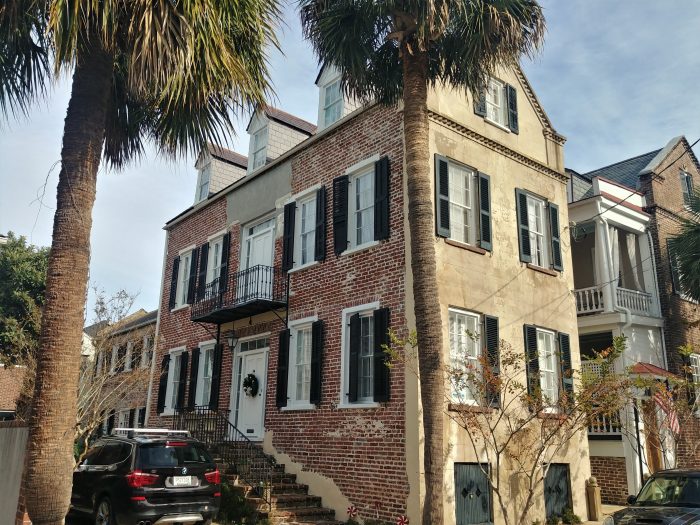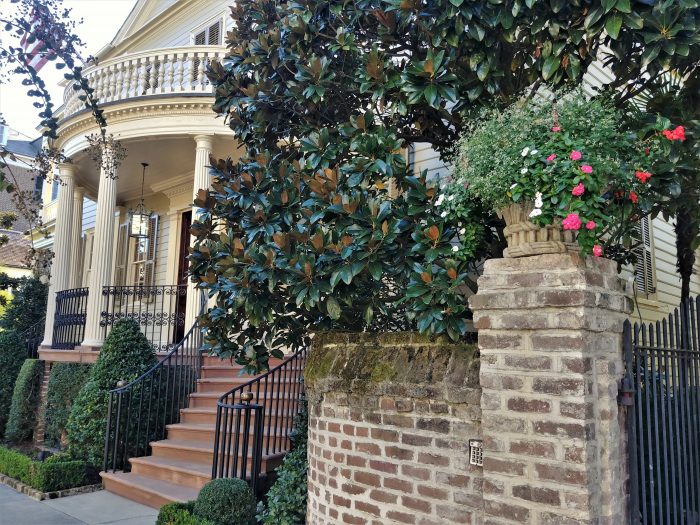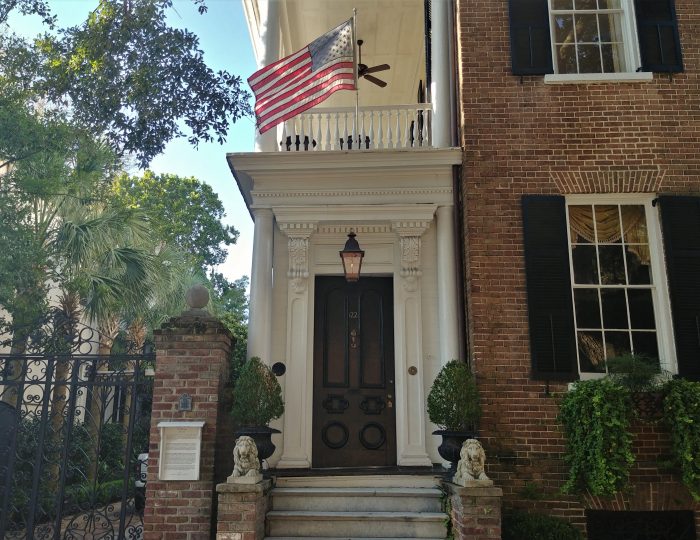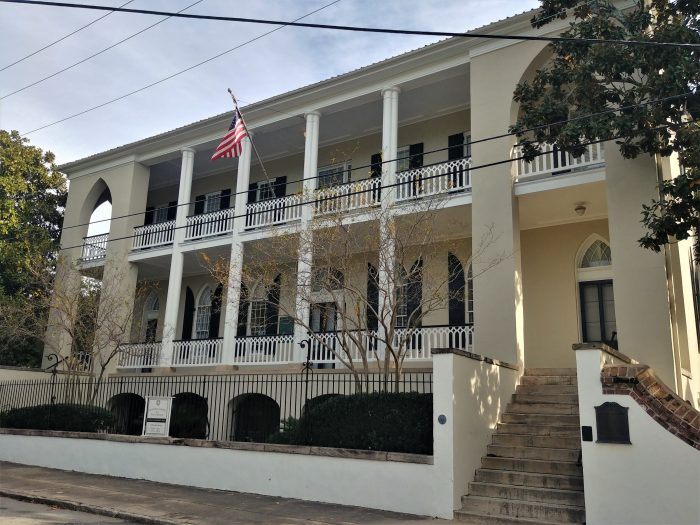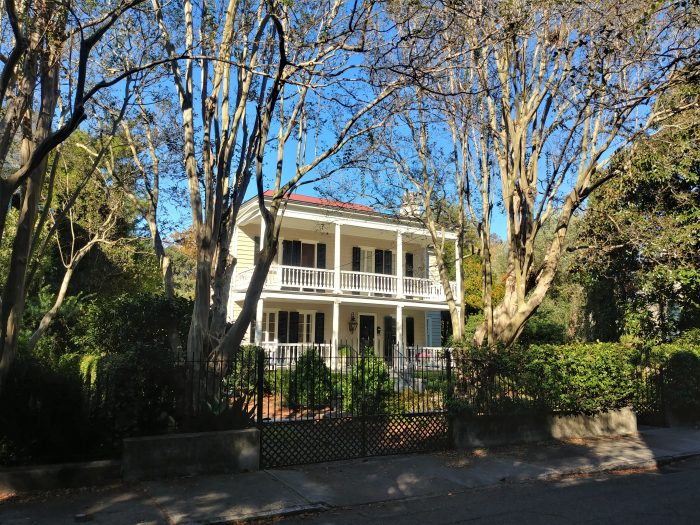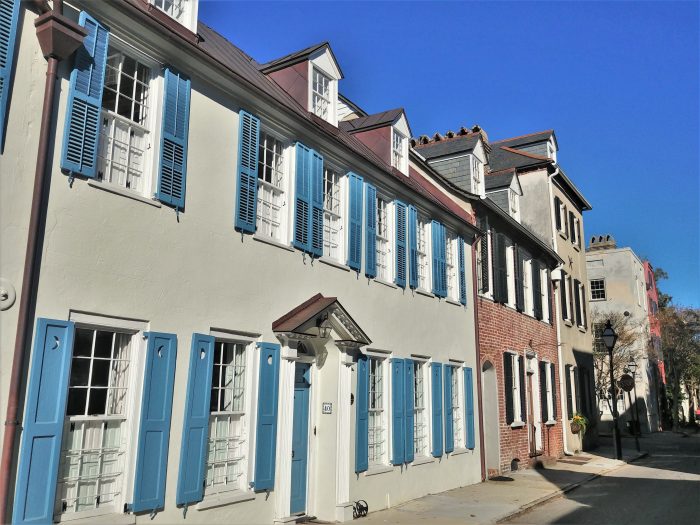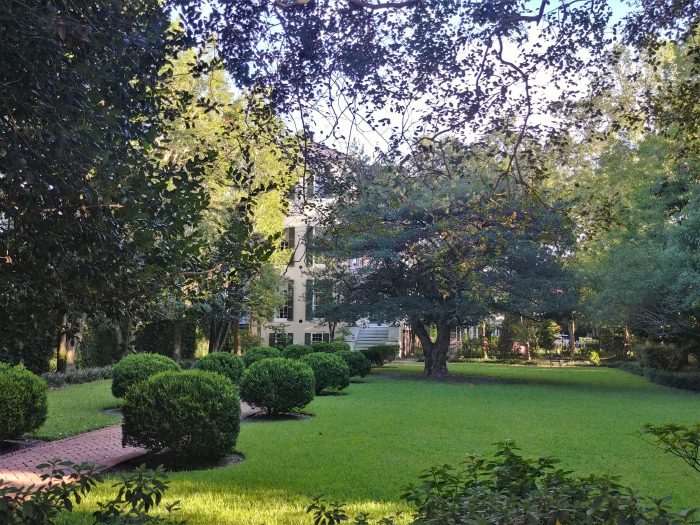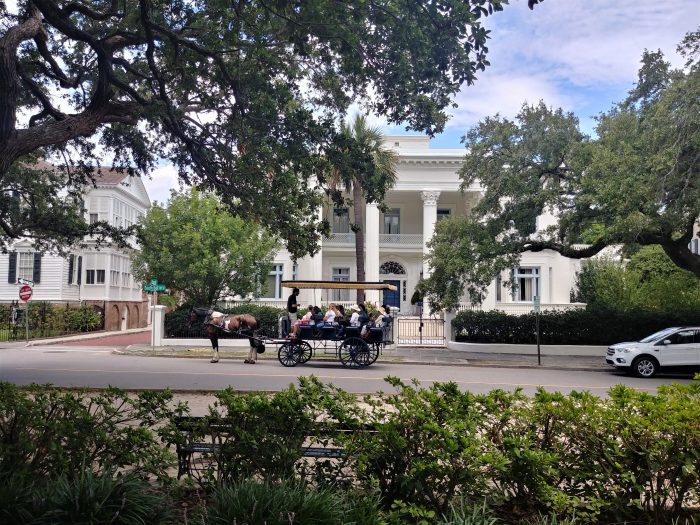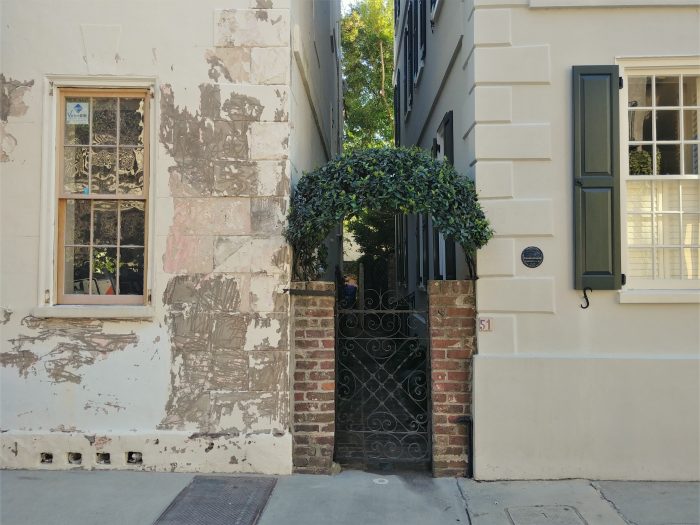This handsome house on Queen Street, c 1850, used to have a very different look. This was once a classic Charleston single house with a double piazza — you can tell by the large doors that open on the first and second floors.
So Charleston
This house, c. 1783, on Meeting Street is full of Charleston beauty. On its top is a rooftop lantern or cupola, which is an unusual feature for a private house, as they are more common in public or institutional buildings.
Classic Charleston
This beautiful entrance on Tradd Street leads into a house built c. 1850 by William C. Bee, the owner one of the leading blockade running businesses in Charleston.
Semper Fi
The famed Robert Mills designed this beautiful building as the Marine Hospital to treat sick and disabled merchant seamen. Built in 1831-34, it was Charleston’s first Gothic Revival structure and has had many interesting tenants since its original use — including being a Confederate hospital, a free school for black children and the Jenkins Orphanage.
Simple and Setback
This simple little antebellum (c.1810) house on Tradd Street is unusual for the size of it setback from the street. In the 1850’s it became the residence of an undertaker, who constructed a small structure next door in which to build coffins. Not what you’d find South of Broad today!
Antebellum South Battery
The house on the corner of King Street and South Battery was built in the 1820’s and originally had a double-tiered piazza — which was removed in the early 1900’s and replaced by the current doorway and iron balcony.
Shutters
This beautiful blue-shuttered house on Tradd Street was built about 1718. 300 years ago it would have stood within the walls of the then walled city of Charleston.
Hidden Beauty
Built in the late 1790’s and with over 6000 square feet of space, the Bowles-Legare-Parker House is beautifully screened from Tradd Street (a better peek of it can be had from Greenhill Street).
Villa Margherita
This carriage is pulling some visitors past the Villa Margherita on South Battery. This house has a storied past, both as a residence and a hotel (four US presidents, among others, have stayed there).
Quoins
A cool little gate and its greenery cap on Tradd Street between the quoin covered corners of two houses. How Charleston.
- « Previous Page
- 1
- …
- 80
- 81
- 82
- 83
- 84
- …
- 188
- Next Page »
